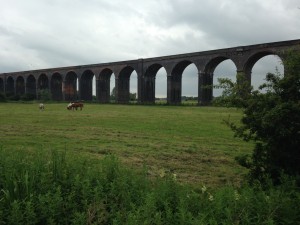
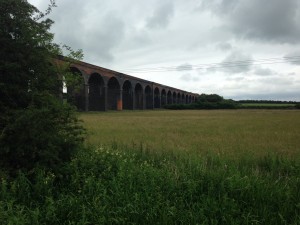
The clue was really in the names. I saw Meadow Pipits (which I could identify but were nice to see), my first Meadow Browns of the year (which I also could identify) but also Meadowsweet (I know that one), Meadow Buttercup (there are an awful lot of buttercups), Meadow Cranesbill (I can do that one on a good day), Meadow Vetchling (I knew it was a vetch), Meadow Rue and Meadow Barley. Guess what? We were in a meadow!
To be a little more precise, we were in the delightful Plantlife nature reserve of Seaton Meadows which is only c45 minutes from my home, and which I have driven past, unaware of its existence, in the past. I first learned of it last year when it featured in Plantlife’s membership magazine (I’ve been a member for ages) and I phoned them up to see whether it was still worth a visit. As I feared, it had been cut for hay and so I promised myself I would try to visit this year – and I have kept that promise.
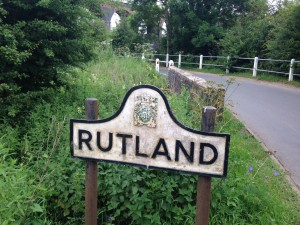
I travelled through beautiful Northamptonshire on a lovely June afternoon and across the county border into bandit country. As I parked the car I momentarily thought I heard a Curlew call but realised it couldn’t possibly be that. A Chiffchaff was carrying food and a pair of Lapwings clearly had some chicks judging from their mobbing of a Carrion Crow which flew past. A Bullfinch flew along the hedgerow but it was time to put aside bird-ish things and concentrate on plants.
I met up with Joe Costley and a band of Plantlife supporters. They had just finished a proper look round the nature reserve and now Joe was going to give me a quick tour too – which was very kind of him.
Seaton Meadows were bought by Plantlife in 1996 with money left over from a very successful appeal, and to honour the memory of Geoff Hamilton, the gardener, who lived nearby and was a great Plantlife supporter.
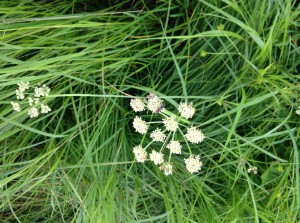
The nature reserve is 28 acres and is in the floodplain of the River Welland. As well as plants called ‘meadow something’ we saw many others including Pepper Saxifrage, which isn’t even a proper saxifrage (how confusing can plants be?!) but is, along with plants like Green-winged Orchid and Dyer’s Greenweed (which occur on other sites) a good indicator of an ancient meadow – one that has had broadly similar management for over 170 years.
Joe told me that he’d heard a Curlew several times that afternoon – but I concentrated on the plants.
This meadow is a good example of what was once ordinary but is now special. It is a Site of Special Scientific Interest but that awful phrase does nothing to tell you that it is a lovely place to be – looking at the plants and the butterflies and trying not to be distracted by the birds (a Red Kite flew over, as they do). I’d agree that it is certainly ‘special’ – it’s really lovely and I’m glad that it remains as a small example of how the countryside used to look. I wouldn’t want to turn back the clock and see the the whole countryside return to this gloriously beautiful land use but it’s a pity we didn’t save a few more fragments as we were trashing our natural heritage back in the post-war period. I was glad to hear that Plantlife will be using ‘green hay’ from this site to seed, literally, another meadow nearby. Good luck to them!
This is, to throw out another awfully dull phrase, MG4 grassland – a rare habitat in international terms. This fairly small field was something really special.
Joe and I agreed that neither of us would want to live in a landscape where everywhere was the same and Joe told me that ‘There’s a type of meaning to it that I respond to in personal terms‘ and went on ‘ For me, it’s important in biological terms, but also as part of our cultural history. Meadows like this define history – they differ from place to place.‘.
I could see what he meant. But for me, I needed Joe’s interpretation of this meadow to see it in anything approaching the clarity with which he saw it, and appreciated it, and understood it. I liked it – to look at – but I cared about it even more as Joe interpreted it for me.
Thousands of people must drive past this site, even in the few summer months of its peak wondrousness, and not get it at all. And that, quite honestly, would have been me too if I hadn’t had the great treat and pleasure of Joe’s company and knowledge.
As I walked back to my car I wondered how protected this site was. What impacts might climate change have on it? What upsets might the neighbouring land uses impose on it? What might its fate be? Seaton Meadows were now precious to me and they looked very vulnerable and fragile.
A Curlew sang in the distance and then I saw a pair of them fly past. Crikey! This place must be special!
PS Next Sunday my book review will maintain the meadow theme – Meadowland by John Lewis-Stempel which has received many celebratory reviews.
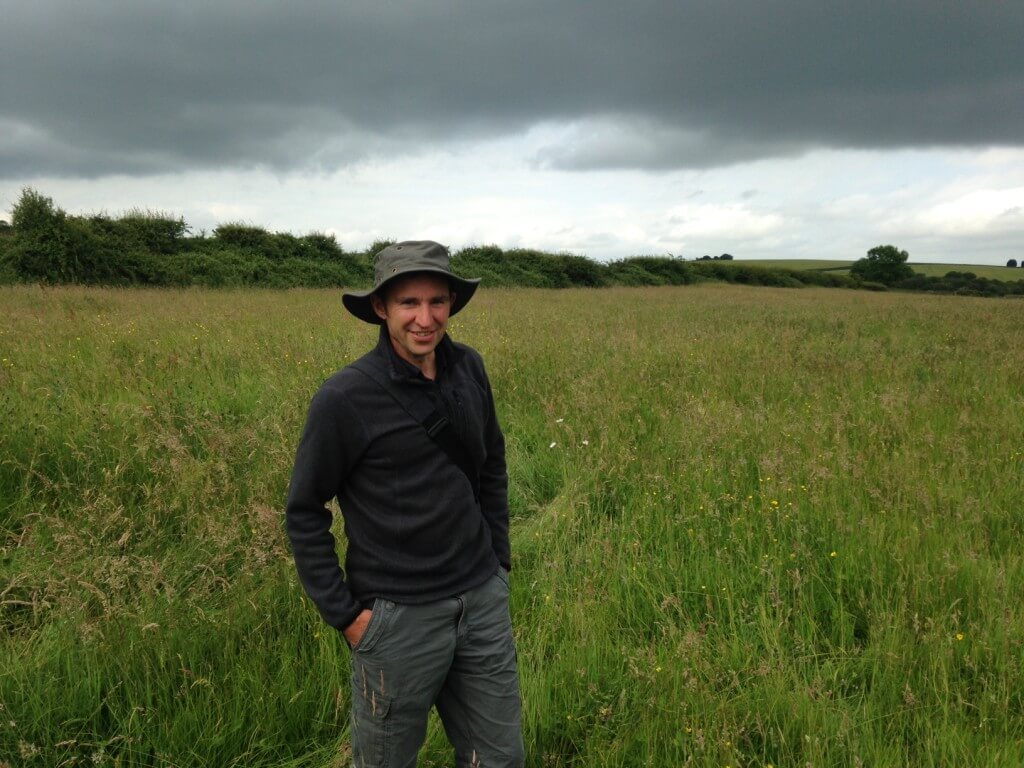
[registration_form]
A wonderful site it would seem but, in the eyes of our government at least, not much more ecologically valuable than a field of peas or beans. (Heavy sigh).
Sadly how true Jonathan. Its good to see Mark at least trying to get into plants. Yesterday as part of my post op recovery my brother and I went to two sites to look at orchids ( plants for birders you might say). Site one I’ve been to several times in past years thousands of Twayblades and may be 30 Frog Orchids , only a few of which were in full flower. Plenty of Small Heaths, Common Blues and a couple of Chimney sweep moths. Site two much closer to home I’ve never visited before a few past their best Southern Marsh Orchids, some splendid Common Spotted Orchids. There is so little of the floriferous places locally left that I can remember as a child and most folk sadly don’t know the difference.
Nor neither is meadow rue really a rue
filbert – I learn something every day. Trouble is, I forget 80% of them by the next day and 90% by the next month. Helps me retain a sense of wonderment as i re-learn the same things over and over…
“by the next”
Sometimes it takes me only seconds
Isn’t meadow rue when you regret something awful you did in a field?
AdamM – have you been bad in a field?
I think I probably have.
Meadow foxtail
This is a very interesting piece. Could you encourage Joe Costley to write a blog to tell us what to look out for in our ‘mini meadows’ we are all avidly watching in our gardens?
I had a bee orchid flowering two years ago. Nowhere to be seen this year. I read they are self-pollinating. So does it mean it has been eaten by a deer or something?
Ann don’t give up they will probably reappear. My mower was U/S for a month in May one year and I saw a strange shoot and left it to become a bee orchid. We have 3 there this year and have been down to zero. What I find frustrating is that i cannot recognise the leaf rosette as I can with Marsh and Spotted orchids so I can stake them and avoid them on other areas.
Thank you Andrew. You have cheered me up no end. I had marked the area and my husband was to mow it on pain of death! I will have to content myself with discovering the names of the grasses I think.
Bee Orchids are at the very weedy end of the orchid spectrum. They appear as if from nowhere, flower, set seed and disappear again. It doesnt mean they have been eaten, just that they have done their thing. I believe Bee orchids take about four years to flower from when the seed arrives.
Seaton meadows holds some happy memories for me – it was one of the last meadows I found and bought (not with my own money obviously) for Plantlife. I think it’s the combination of the amazing Welland railway viaduct, with this fabulous unimproved flood meadow beneath it, that makes it even more special. I had a very happy day filming a piece for Countryfile there in 1997.
It’s worth just reiterating that Seaton is a flood meadow – MG4 as you say (but don’t explain.) There are just 1000ha of flood meadows left in Britain – and they are fascinating for all sorts of reasons. Read more about them at the
http://www.floodplainmeadows.org.uk/
The floodplain meadows partnership is an extraordinary beast in itself and worthy of a blog all of its own Mark.
Miles – many thanks! I’m learning all the time. It is a lovely place. Like you, I sometimes have the real satisfaction of visiting places and thinking ‘I helped secure this for nature conservation’. Isn’t that a great feeling? You should feel very pleased with your role in safe-guarding Seaton Meadows- it was looking great last week. And Curlews too!
Thank you Miles. That is good news. I did feel a bit bad to be fed up at the thought a deer may have eaten it as it is so lovely to me to see deer in the garden. Basically they could eat anything else but that!
Seaton Meadow is a beautiful location. I have wonderful memories of meadows in my childhood and hope future generations will enjoy them also.
Charming meadow, there were Curlew there in 2011 when I paid a visit:-
http://www.theguardian.com/environment/2011/mar/31/country-diary-northamptonshire
Sound acquisition Miles.
Matt – thanks!
Thanks Mark, Matt and Anne – it is a good feeling to know you have played a small part in saving a piece of nature.
Sometimes you go onto a site and just know it’s special – without necessarily having a complete species list or NVC map. Bury Farm in Herefordshire is such a site – which I tried to buy for the Grasslands Trust, but it didn’t work out, and that eventually led to TGT’s demise – so there are real risks with pursuing land acquisition.
Carmel NNR in Carmarthenshire is another one – I’m delighted the Wildlife Trust for South and West Wales are continuing the work we started there.